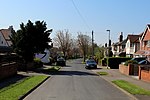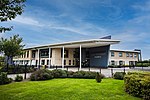Scholes, Leeds
City of LeedsElmetUse British English from June 2020Villages in West Yorkshire

Scholes-in-Elmet is a village in Leeds, West Yorkshire, England. Its name is a plural of Old Norse skáli meaning "temporary shed". It is sometimes known as Scholes-in-Elmet to distinguish it from the villages of the same name in the Holme Valley and Cleckheaton, also by analogy with the neighbouring village of Barwick-in-Elmet and Sherburn in Elmet. The village is part of the civil parish of Barwick in Elmet and Scholes, sits in the Harewood ward of Leeds City Council and Elmet and Rothwell parliamentary constituency. In 2011, the population of Scholes was 2,266.
Excerpt from the Wikipedia article Scholes, Leeds (License: CC BY-SA 3.0, Authors, Images).Scholes, Leeds
Station Road, Leeds Barwick in Elmet and Scholes
Geographical coordinates (GPS) Address Nearby Places Show on map
Geographical coordinates (GPS)
| Latitude | Longitude |
|---|---|
| N 53.826111 ° | E -1.429167 ° |
Address
Station Road
Station Road
LS15 4BU Leeds, Barwick in Elmet and Scholes
England, United Kingdom
Open on Google Maps









